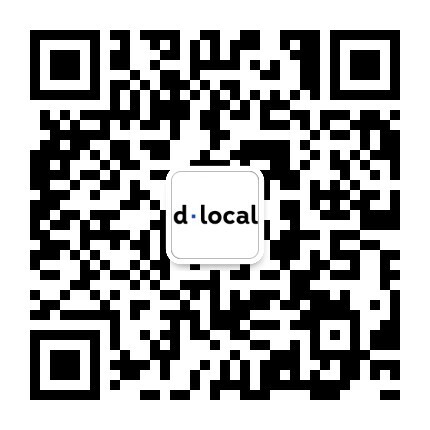Getting ready for Bre‑B: Colombia’s new real-time payment rail

What you need to know
- Bre‑B is Colombia’s new government-backed instant payments system, launching on Official launch date to be confirmed .
- It enables 24/7 A2A transfers using digital keys (llaves), like phone numbers or IDs, instead of full account details.
- Built as a national interoperable rail, interconnectivity with Bre‑B is mandatory for financial institutions in Colombia.
- Bre-B marks a shift from siloed systems to open connectivity, expanding financial inclusion in Colombia.
- The system starts with P2P and P2M transfers and is expected to expand into B2B and G2C payments in future phases.
A shift long in the making
For years, Colombia’s digital payment ecosystem has been fragmented, with each bank or wallet operating like a walled garden. Transfers between institutions can be slow, expensive, or simply not available.
Cash still dominates everyday transactions in Colombia, and even when digital options exist, they come with friction: users have to input full bank account numbers, and transfers are often only processed during business hours.
Bre‑B is set to change that. Developed by Banco de la República, Colombia’s central bank, Bre‑B is a real-time, government-regulated payment rail that connects banks, eWallets, and processors under one unified system. It’s the most ambitious digital payment infrastructure reform in the country’s history, and it’s built to make sending money simple.
What is Bre‑B and why is it different?
At its core, Bre‑B is a 24/7, alias-based account-to-account payment system that allows users to transfer money using what it calls llaves—digital keys that serve as a proxy for your account.
These keys can be:
- A mobile phone number
- A national ID number
- An email address
- Or a custom alphanumeric alias
Once linked to a bank or eWallet account, a llave lets anyone send money without needing to know the account details. Transfers are processed through a central clearing system that instantly settles the transaction and sends confirmation to both sides.
This is a leap not just in speed and simplicity, but in interoperability for Colombian’s payments.
How Bre‑B actually works
Behind the scenes, Bre‑B routes the transaction through a central switch operated by Banco de la República, which instantly identifies the alias, confirms availability, settles the transfer, and notifies both parties.

What the flow looks like
A Bre‑B transfer will happen in seconds:
P2P with Bre‑B
Users can send money in seconds using a simple alias (llave):
App > Enter alias + amount > Instant approval > Real-time confirmation
P2M with Bre‑B
Merchants using QR codes are ready to receive Bre‑B payments. The QR code will be linked to a Merchant ID, which functions as a Bre‑B alias (llave):
Customers scan the QR code or enter the alias in the app > Funds are transferred instantly
From closed loops to open rails
Under the old model, digital transfers often remained within a single ecosystem—Nequi to Nequi, or within the same bank. Bre‑B introduces true interoperability. Now, a user at a large commercial bank can instantly transfer funds to someone using a smaller eWallet or vice versa.
By design, Bre‑B is a mandatory system for all licensed financial institutions in Colombia. Banks, neobanks, and eWallets like Nequi are required to integrate with Bre‑B and accept transfers through it. This is a massive structural change. Where institutions once built moats around their users, they now have to be part of a shared, national payments grid.
It means any Colombian, regardless of where they bank or which app they use, can receive funds from any other.
Solving real market pain points
Bre‑B tackles some of the biggest barriers to digital payments in Colombia:
- Cash still dominates 78% of daily transactions, despite widespread smartphone access.
- Transfers are delayed, often restricted by business hours and cut-off times.
- Sending money is overcomplicated, requiring full account details.
- Systems are fragmented, with limited or no interoperability between banks and wallets.
- Digital payment options often come with high costs for users and businesses, limiting broader adoption.
With real-time, digital key–based transfers available 24/7—and no end-user fees for the first three years—Bre‑B simplifies the entire experience. It removes cost barriers, lowers friction, and makes digital payments more accessible.
Laying the groundwork for national adoption
The market’s response has been broadly positive. Since July 14, 20+ million keys have been registered, and more than 171 financial institutions and five payment systems have connected with Bre-B.
“Bre‑B is a major milestone for our payment infrastructure. It introduces real interoperability across the financial ecosystem, something we’ve been missing. It’s not just about faster transfers for Colombians, but about creating access and making digital payments really work for everyone.” —David Ballesteros, Country Manager (Colombia) at dLocal
But infrastructure is only one part of the equation—awareness and trust will shape the pace of adoption. For many Colombians, Bre‑B will be their first experience with instant, alias-based payments. Financial institutions are working to educate users and reduce hesitation around fraud or errors.
Rollout timeline & future roadmap
Bre‑B is rolling out in clearly defined phases:
- July 14, 2025 – Digital key (llave) registration opened via banking and wallet apps
- August 2025 – Pilot testing with live transfers under real conditions (Marcha Blanca)
- Official launch date to be confirmed – Official nationwide launch for P2P (person-to-person) instant payments and P2M (person-to-merchant) payments via QR codes and alias-based checkout (for merchants that integrate Bre‑B).
- 2025–2028 – No transaction fees for end users
What follows next is just as important:
- B2P: Salary, refund, or gig economy payouts
- G2C: Public disbursements, benefits, and tax reimbursements
- Recurrent payments and more advanced use cases
Bre-B is bigger than payments
Bre‑B isn’t just a technical upgrade. It’s a public infrastructure project, led by Banco de la República, that aims to fundamentally change how money moves in Colombia, with inclusion, access, and efficiency at its core.
By allowing any user—regardless of platform or provider—to send and receive instant payments using digital keys, Bre‑B removes long-standing barriers to financial participation. It connects wallets and banks, makes everyday transactions simpler, and opens the door for millions of Colombians to move into the formal economy.
This is part of a broader shift happening across emerging markets. From Pix in Brazil to UPI in India, regulated, interoperable payment rails are reshaping entire economies and enabling new models of commerce and inclusion. Bre‑B is Colombia’s contribution to that movement. And it represents the kind of transformation dLocal is committed to supporting.
Pix transformed Brazil. UPI redefined payments in India. Is Colombia next?
Get in touch with our payment experts
We help global companies such as Amazon, Spotify, and Microsoft find new opportunities in high-growth markets. Let's think outside the box for tailor-made payment solutions for your business. Fill out this form, and we'll get back to you as soon as possible.
Contact us




